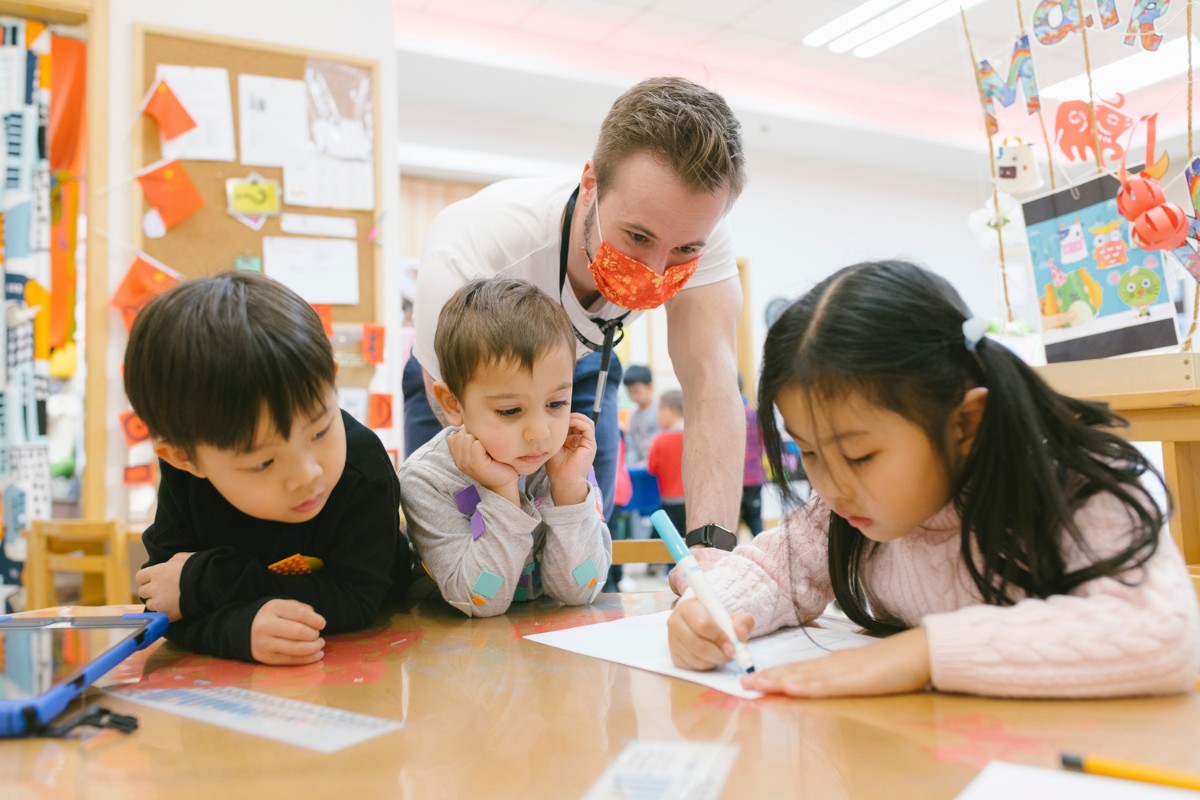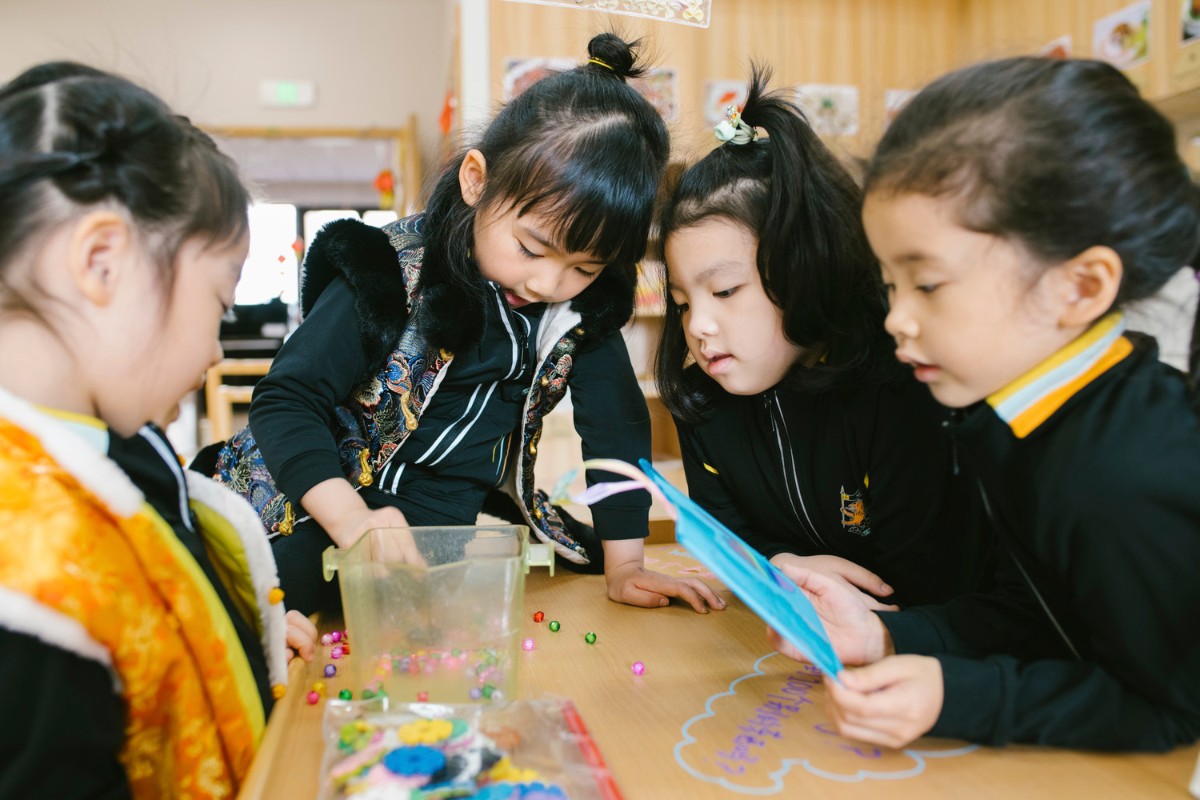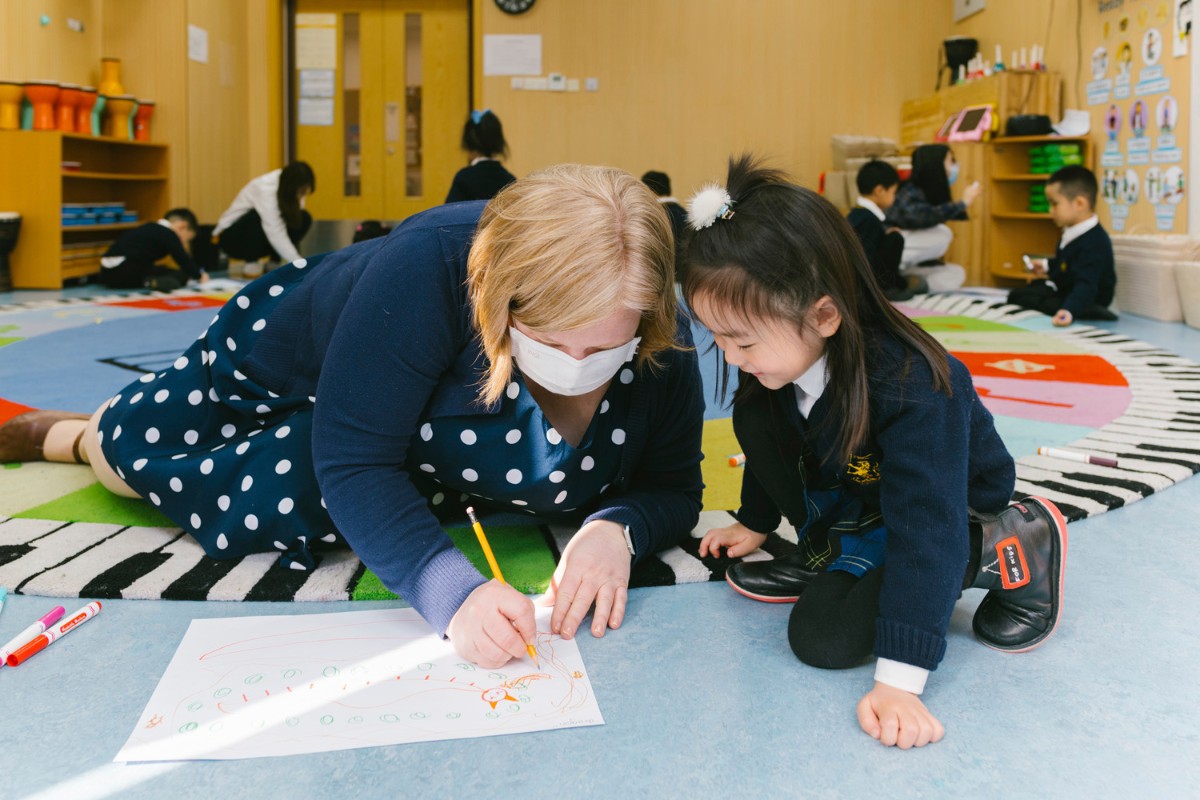
Fiona Carter
Director of Academics (Early Years)
A key principle of excellent early years teaching is how well we use our interactions to find out what children know already and to then take their learning further. This is in every aspect of the nursery day, from playing alongside them in our learning environments to daily routines such as snack time and preparing for their nap. Indeed, research shows us that these ways of listening, questioning, reassuring and even making meaningful eye contact help to build young brains with the neural pathways that last a lifetime and support learning throughout the rest of their education.
Every interaction has an impact, the way you greet children, the way you respond to those who want to show you something and the way you smile. Interaction is our most important job.

We know that as they begin their educational journey, the strategy for how we teach must have children at the centre. This will then help them master the new knowledge and skills they are being taught and become highly motivated and actively involved with their learning. Positive interactions, where adults tune into what a child might be thinking or needs to know next not only extend and embed knowledge, skills and concepts but help to build the crucial attachments they need for high levels of wellbeing, with the understanding that their thoughts and ideas are valued. Without these attachments, we cannot provide the maximum conditions for learning. Relationships are key, especially when we are encouraging children to communicate in more than one language and through our interactions, children need to know that their adults are available, willing to listen, are interested, are willing to give time and attention and of course, care.
We use the Leuven Scales to measure how well our interactions are supporting children`s wellbeing as the work of Professor Ferre Leavers explains that a child feeling ‘comfortable in their own skin’ is essential for high levels of involvement and engagement in their learning. Talk to Your Baby research (Cathy Hamer, 2009) found intriguing evidence between strong attachments developed through non-verbal and verbal interactions, and the rapid development of communication and language. Julie Fisher, author of Interacting or Interfering summarises the importance of interactions very well, “Nothing matters more than stopping and listening before responding positively to the child...There is no contest between child-led and adult-led learning. It is the one without the other that gives young children an impoverished educational experience.”

So, what do sensitive and skilful interactions look like between children and adults?
These can fall into two categories: responding and contributing. Both are most impactful through our planning of playful experiences in learning environments which are inspiring and based on young children`s predictable interests.
Responding to children can be in the forms of noticing, wondering and puzzling over ideas, taking time to explore and, really importantly, to reflect. All too often, busy classrooms and full timetables make time to stop, watch and ponder a rarity and so making sure that our teaching teams set aside time for reflection on the rhythms of the day and how they impact on learning is very important.
Teaching techniques on contributions to learning involve the introduction of thoughts, ideas and specific vocabulary as well as giving instruction and direction when appropriate. If teachers of young children do not take advantage of these approaches whilst children play, we are missing real moments of possibility. Moreover, our learning environments are full of interesting resources, but children need to know their purpose in order to maximise the potential for learning and this is as valuable a teaching strategy in the early years as our whole group session times.

The documentation of learning, alongside the children is also highly impactful and much more relevant to the child than a wall display which is arranged later by the adult alone. The interactions in these moments are invaluable as they focus on the learning process and are ideal opportunities to talk to the child or group about their hard work, resilience when something went wrong and how well they work together.
Questioning can also support us to find out what children already know and challenge their thinking. However, too many questions, especially if they are closed, can be unhelpful. Questions can muddle and interrupt young children`s thinking as well as limiting what they might be about to show or tell us.
Three types of questions which do work are: showing interest and clarifying, pondering to encourage creative thinking and posing possibilities where we plant a seed of thought in the child.
Common anxieties with questioning techniques when working in the early years are often around when and when not to intervene and saying too much. Our advice is to always observe first and as the relationship builds with the child, tune into moments of possibility before speaking. High levels of engagement can sometimes be broken if the adult interrupts but the right interaction at the appropriate time can take learning that step further.

In summary, as adults in an early years’ provision, we need to be intuitive and sensitive, aware not to impose our own agenda onto a conversation and allow for the wonder of young children`s learning to take place. We need to observe and be playful ourselves to capture when it is best to talk and when it is better to listen. Having a genuine interest in what a child is saying and giving something of yourself will always impact on learning as well as make sure that the child recognises that the adult is having a genuine conversation with them, even if it is non-verbal. Let`s always take the time to delight in the magic of the everyday with children and learning will follow.